External Wall Insulation (EWI) can reduce your home’s heat loss by up to 45%, directly lowering your energy bills amid rising costs. You’ll benefit from a protective thermal barrier that prevents warmth from escaping through your walls while maintaining consistent indoor temperatures. With proper installation, EWI delivers measurable savings through improved energy efficiency, with most homeowners recovering their investment within 5-7 years. Understanding the science and installation process will maximize your potential savings.
Key Takeaways
- EWI reduces heating costs by up to 45-50% through improved thermal efficiency, providing immediate relief from escalating energy prices.
- Installation costs can typically be recovered within 5-7 years through sustained energy bill savings.
- Government funding schemes and incentives can significantly reduce initial installation costs, making EWI more accessible.
- Continuous insulation layer eliminates cold spots and thermal bridging, maximizing heating efficiency and reducing wasted energy costs.
- Property value increases due to improved energy efficiency ratings, offsetting both installation costs and rising energy expenses.
Understanding External Wall Insulation: A Cost-Effective Energy Solution

While energy costs continue to rise, external wall insulation (EWI) offers homeowners a proven solution for reducing heat loss and lowering utility bills.
You’ll find that EWI involves applying insulation materials to your home’s exterior walls, creating a protective thermal barrier that greatly improves energy efficiency.
When you invest in EWI, you’re joining thousands of homeowners who’ve transformed their properties into more sustainable living spaces.
The system typically consists of insulation boards secured to existing walls, followed by protective rendering and finishing layers.
You’ll benefit from reduced heat loss through walls by up to 45%, making your home warmer in winter and cooler in summer.
This thorough solution addresses thermal bridging issues and helps eliminate cold spots, ensuring consistent indoor temperatures throughout your living space.
The Science Behind EWI and Heat Loss Prevention
Because heat naturally flows from warmer to cooler areas, your home’s walls continually lose thermal energy without proper insulation.
External Wall Insulation (EWI) creates a protective barrier that considerably reduces this heat transfer through a scientific process known as thermal resistance.
When you install EWI, you’re addressing a critical issue called thermal bridging, where heat escapes through gaps and weak points in your wall structure.
The system’s continuous insulation layer wraps your home like a warm blanket, maintaining consistent indoor temperatures.
Insulation effectiveness is measured by its R-value, which indicates how well the material resists heat flow.
The higher the R-value, the better the thermal performance.
Modern EWI systems typically achieve ideal R-values through carefully selected materials and professional installation techniques, maximizing your home’s energy retention.
Calculating Potential Energy Savings With EWI Installation
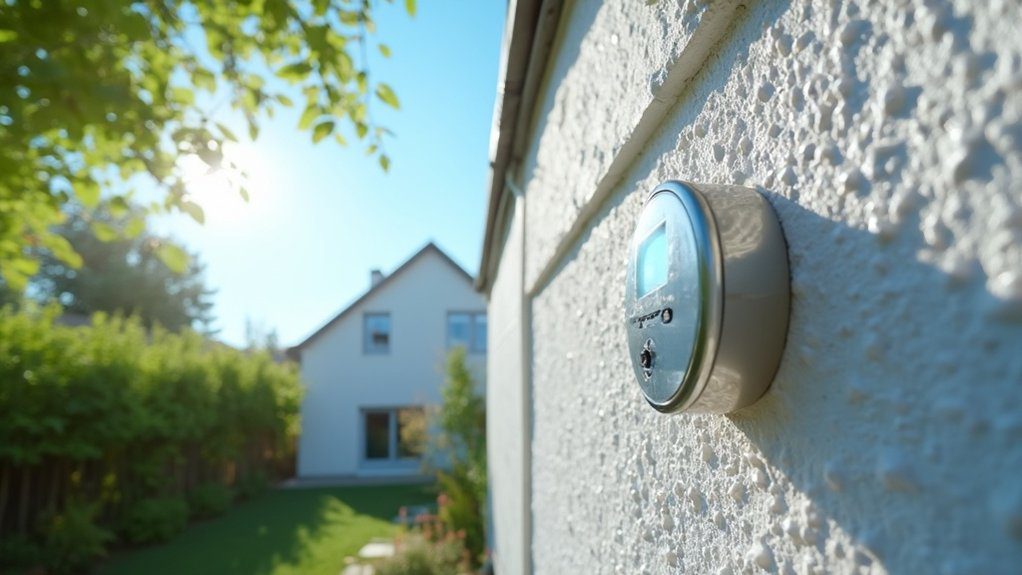
Understanding your potential energy savings starts with a detailed analysis of your current heating costs. By conducting a thorough cost analysis, you’ll be able to project the financial benefits of External Wall Insulation (EWI).
Your home’s energy efficiency can improve considerably, typically reducing heat loss by 45-50% through walls after installation.
To calculate your potential savings, consider these key factors:
- Your property’s current U-value and the projected improvement after EWI
- Annual heating fuel consumption and local energy rates
- Total wall surface area requiring insulation
- Your current heating system’s efficiency rating
Using these metrics, you can determine your return on investment period.
Most homeowners see their EWI installation costs recovered within 5-7 years through reduced energy bills, making it a financially sound long-term investment for your property.
Key Benefits Beyond Energy Cost Reduction
Beyond its substantial energy savings, External Wall Insulation delivers multiple advantages that enhance both property value and living conditions.
You’ll notice immediate improvements in your home’s thermal comfort, with more consistent indoor temperatures throughout the year. EWI also acts as an effective sound barrier, reducing external noise pollution and creating a more peaceful living environment.
The aesthetic enhancement of your property is significant, as EWI allows you to choose from various modern finishes that can transform dated facades into attractive, contemporary surfaces.
This visual upgrade, combined with improved energy efficiency, can boost your property value considerably. Additionally, you’ll benefit from enhanced weather protection, as EWI creates a protective shell that shields your walls from rain, frost, and other environmental factors that could cause deterioration.
Installation Process and Material Options

When planning External Wall Insulation installation, you’ll need to contemplate both the specific material types and the systematic process involved. Your choice of material selection directly impacts both performance and cost-effectiveness, while proper installation techniques guarantee best results.
- Expanded Polystyrene (EPS) offers cost-effective thermal performance and is lightweight, making it popular among homeowners.
- Mineral Wool provides superior fire resistance and acoustic properties, though it’s typically more expensive.
- Phenolic insulation delivers the highest thermal performance per unit thickness, ideal for properties with space constraints.
- Polyisocyanurate (PIR) boards balance thermal efficiency with moderate cost.
The installation process typically involves surface preparation, fixing the insulation boards, applying reinforcement mesh, and finishing with render.
You’ll want to work with certified installers who understand local building regulations and can assure quality workmanship.
Government Grants and Financial Support for EWI Projects
Since External Wall Insulation represents a significant investment, numerous government schemes can help offset your initial costs. You’ll find various financial incentives available through local and national programs that can make EWI more affordable for your home.
| Funding Type | Coverage | Eligibility |
|---|---|---|
| ECO4 Scheme | Up to 100% | Low-income households |
| Green Homes Grant | Up to £5,000 | Most homeowners |
| Local Authority Grants | Varies by region | Area-specific criteria |
| Home Energy Scotland | Up to £9,000 | Scottish residents |
Check your eligibility for government funding through your local authority’s website or contact an approved EWI installer who can guide you through the application process. Many installers are certified to process these applications directly, making it easier for you to access available support programs.
Real-World Success Stories and Performance Data

Real-world data from completed External Wall Insulation projects demonstrates consistently impressive results across diverse property types.
Case studies reveal significant improvements in thermal efficiency and comfort levels, with performance metrics showing energy savings of 20-45% in most installations.
- A 1930s semi-detached house in Manchester reduced its annual heating costs by £580 after EWI installation, with thermal imaging confirming a 35% reduction in heat loss.
- Historic Victorian terraces in Bristol showed average temperature increases of 4°C during winter months while using 25% less energy.
- Modern apartment complexes in Glasgow reported 40% reductions in heating requirements post-EWI installation.
- Social housing projects across the UK consistently demonstrate 30-35% decreases in residents’ energy bills.
These documented successes prove EWI’s effectiveness in reducing energy consumption and improving home comfort levels.
Frequently Asked Questions
Does External Wall Insulation Affect Indoor Room Dimensions or Living Space?
You won’t lose indoor space or affect room aesthetics with external wall insulation, as it’s applied to your home’s exterior. There’s no space reduction inside since all modifications happen on the outside walls.
How Long Does External Wall Insulation Typically Last Before Needing Replacement?
You’ll typically get 20-30 years from properly installed external wall insulation. Watch for longevity factors like weather exposure and maintenance. Look out for replacement signs including cracks, dampness, or detachment from walls.
Can External Wall Insulation Be Painted or Decorated After Installation?
You’ll be pleased to know that your external wall insulation can be transformed! You can apply various paint options and decorative finishes directly onto the render, letting you customize your home’s appearance while maintaining insulation performance.
Will External Wall Insulation Work Effectively in Extremely Humid Climates?
You’ll need proper moisture protection, as humidity impact can affect insulation performance. With the right vapor barriers and climate considerations in place, your external wall insulation will perform effectively even in high-humidity environments.
Does External Wall Insulation Require Special Maintenance or Periodic Inspections?
You’ll need annual inspections to check for cracks and moisture damage. Your maintenance requirements include cleaning the surface, repairing any damage promptly, and repainting every 10-15 years to maintain insulation effectiveness.
Conclusion
Like a warm blanket on a cold night, external wall insulation stands as your shield against rising energy costs. You’ll find that investing in EWI isn’t just about immediate savings – it’s a strategic solution that delivers long-term financial and environmental benefits. By combining available government support with proven thermal technology, you’re positioning yourself to reduce energy consumption while increasing your property’s value and comfort levels.

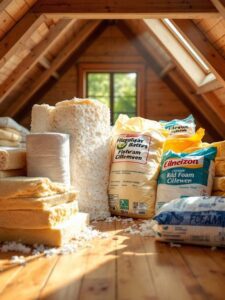
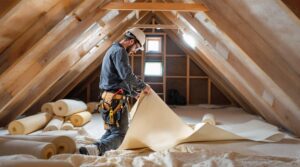

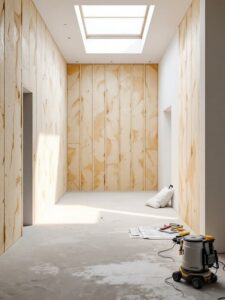



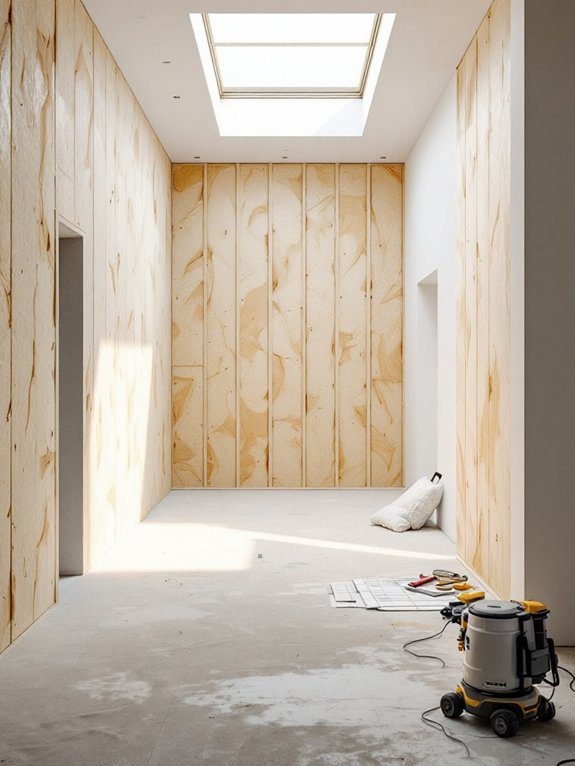
17 Responses
Write more, thats all I have to say. Literally, it seems as though you relied on the video to make your point. You obviously know what youre talking about, why throw away your intelligence on just posting videos to your blog when you could be giving us something informative to read?
Absolutely composed subject matter, Really enjoyed looking through.
I view something truly interesting about your website so I saved to bookmarks.
I like this website very much so much fantastic info .
I would like to get across my passion for your kindness supporting men and women who should have guidance on that subject matter. Your personal commitment to getting the solution around ended up being astonishingly significant and has specifically allowed people just like me to attain their ambitions. The valuable recommendations entails much a person like me and even more to my mates. Many thanks; from all of us.
It’s appropriate time to make some plans for the future and it’s time to be happy. I have read this post and if I could I desire to suggest you few interesting things or suggestions. Perhaps you can write next articles referring to this article. I desire to read more things about it!
Wonderful website you have here but I was wanting to know if you knew of any discussion boards that cover the same topics discussed here? I’d really like to be a part of group where I can get advice from other knowledgeable people that share the same interest. If you have any suggestions, please let me know. Thanks!
I’ve been browsing on-line more than three hours today, but I never found any interesting article like yours. It is pretty worth sufficient for me. Personally, if all site owners and bloggers made good content material as you did, the internet will be much more useful than ever before. “I finally realized that being grateful to my body was key to giving more love to myself.” by Oprah Winfrey.
Thank you for your sharing. I am worried that I lack creative ideas. It is your article that makes me full of hope. Thank you. But, I have a question, can you help me? https://accounts.binance.com/ru-UA/register-person?ref=JVDCDCK4
Thanks for sharing. I read many of your blog posts, cool, your blog is very good.
Can you be more specific about the content of your article? After reading it, I still have some doubts. Hope you can help me. https://accounts.binance.com/it/register-person?ref=P9L9FQKY
There is noticeably a bundle to know about this. I assume you made certain nice points in features also.
Thanks for every other informative web site. Where else could I get that type of info written in such a perfect approach? I’ve a undertaking that I am simply now running on, and I’ve been on the look out for such info.
Thanks for sharing. I read many of your blog posts, cool, your blog is very good. https://accounts.binance.info/en-ZA/register-person?ref=B4EPR6J0
Its such as you read my thoughts! You appear to understand a lot approximately this, such as you wrote the ebook in it or something. I believe that you could do with a few to pressure the message home a little bit, but other than that, this is magnificent blog. An excellent read. I will certainly be back.
This is a game-changer for meIve been stuck on this exact issue, and your advice gave me a whole new approach. So grateful you shared this!
Thank you for your sharing. I am worried that I lack creative ideas. It is your article that makes me full of hope. Thank you. But, I have a question, can you help me?